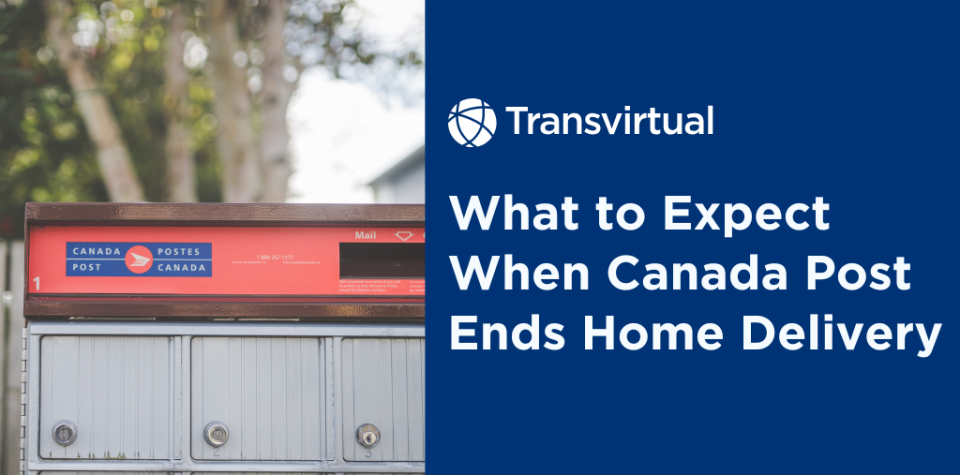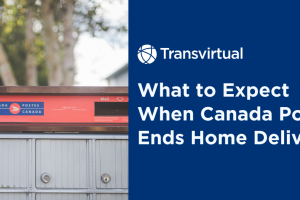Soon, Canada will be the only G7 country without a home mail delivery service.
This came after the Canadian government’s announcement two weeks ago that Canada Post would end most of its home delivery and other services to ensure its survival.
Joël Lightbound, prime minister of government transformation, public works, and procurement, said, “The bottom line is this: Canada Post is effectively insolvent.” While he recognized that the agency provides essential services to Canadians, particularly those in rural and remote communities, the repeated bailouts and significant losses are hard to ignore.
According to him, Canada Post is losing $7.2 million every day. Government figures show that since 2018, Canada Post has incurred a total loss of $3.6 billion, and it is projected to incur an additional $1.1 billion during the current year. Most of these losses come from a decline in mail and parcel demand and from not keeping up with the shift to digital communication and competition from private couriers.
What to Expect When Canada Post Ends Home Delivery
While Canada Post’s mail and parcel volume has significantly decreased over the years, hence the insolvency, they’re still serving almost half a million businesses in the country. It still distributes billions of mail to people, among them are isolated seniors who are greatly affected by this shift.
Here are things to expect so you can prepare better:
Route restructuring
Among those announced is the replacement of door-to-door delivery with community mailboxes, which will save the government $400 million annually. This centralized delivery system will take the place of carriers walking or driving to every home, reducing stop density and cutting time on every route.
With community boxes, delivery points are more fixed (e.g., grouping boxes at fixed locations), which helps with planning, scheduling, and optimization of delivery legs.
Vehicle and transportation changes
Non-urgent letters (letter mail) can be shifted from air to ground transport. While it reduces cost, it also increases transit times.
Because of centralization, the system can consolidate more mail/parcel flows, possibly using larger trucks for longer distances to centralized hubs, reducing smaller, less efficient last-mile delivery paths.
Network hub, sorting, and facility adjustments
Some post offices may be closed, especially in low-volume or once-rural but now suburban or mixed areas. This reduces the number of nodes in the postal network.
There may also be changes in docking, handling, and LTL (Less-Than-Truckload) operations. As fewer delivery terminals or nodes may be used, the freight (moving bulk mail/parcel between sorting hubs, warehouses, rural depots) may need reconfiguration. Growth or consolidation in hub facilities may occur.
Transit times
As noted, average delivery times for letter mail may increase (e.g., from 3 to 4 days to 3 to 7 days) because of greater use of ground transport and fewer delivery days.
You might also anticipate potential mismatches for parcels or businesses. If businesses or ecommerce rely on predictable, frequent delivery, especially in door-to-door models, transitions may be difficult.
Involvement with private couriers
Private carriers could gain more market share, especially for parcels and time-sensitive deliveries, filling gaps where the postal service previously had door delivery.
Some private carriers use the postal service for the final leg. If the postal service changes how it handles or delivers to community boxes, these handoff arrangements may need renegotiation.
Work Around the Changes
Canada Post’s decision to end door-to-door delivery marks a turning point in how mail and parcels move across the country. Centralized delivery promises leaner routes and lower costs, but it also reshapes the final mile. It changes how carriers, communities, and logistics networks operate.
While efficiency is the goal, the challenge lies in maintaining accessibility and reliability for every customer, from urban hubs to rural towns. This shift highlights a broader truth: logistics today is not just about movement, but also intelligent coordination and visibility.
Transvirtual can help you navigate this shift. It provides tools for route optimization, live tracking, electronic proof of delivery, and real-time communication, helping carriers adapt smoothly to new delivery models.


